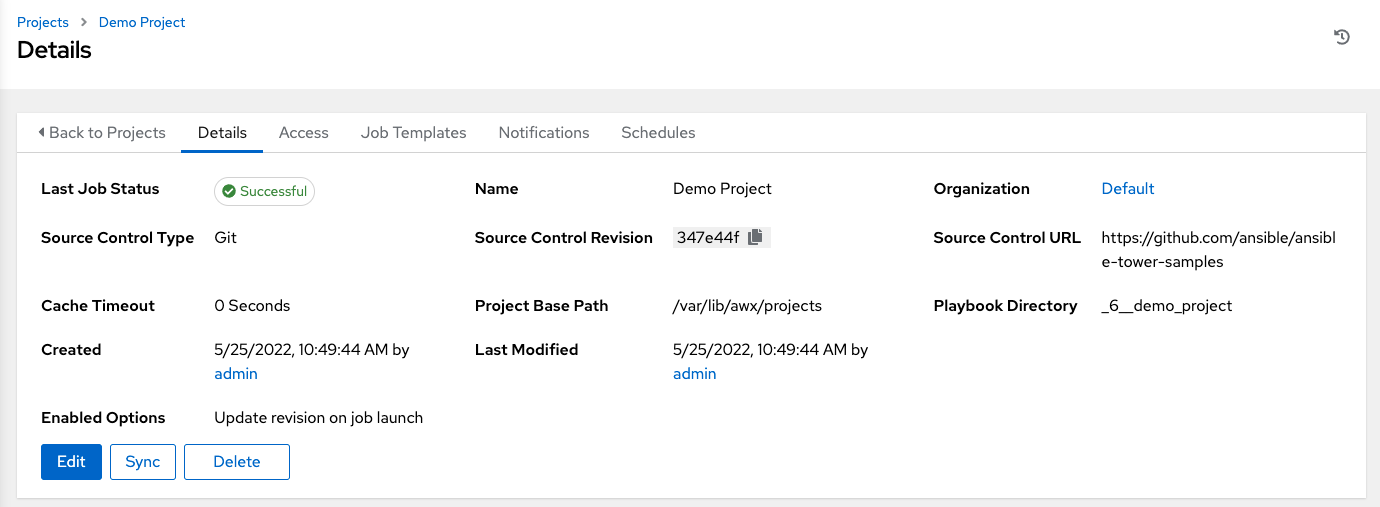Dieser Inhalt ist in der von Ihnen ausgewählten Sprache nicht verfügbar.
Chapter 8. Managing projects
A Project is a logical collection of Ansible playbooks, represented in automation controller. You can manage playbooks and playbook directories different ways:
- By placing them manually under the Project Base Path on your automation controller server.
- By placing your playbooks into a source code management (SCM) system supported by the automation controller. These include Git, Subversion, and Mercurial.
This Getting Started Guide uses lightweight examples to get you up and running. But for production purposes, you must use source control to manage your playbooks. The best practice is to treat your infrastructure as code which is in line with DevOps ideals.
8.1. Setting up a project
Automation controller simplifies the startup process by providing you with a Demo Project that you can work with initially.
Procedure
-
To review existing projects, select
from the navigation panel. - Click to view its details.
8.2. Editing a project
As part of the initial setup you can leave the default Demo Project as it is. You can edit it later.
Procedure
Open the project to edit it by using one of these methods:
- Go to the project Details page and click .
-
From the navigation panel, select
. Click next to the project name and edit the appropriate details.
- Save your changes
8.3. Syncing a project
If you want to fetch the latest changes in a project, you can manually start an SCM sync for this project.
Procedure
Open the project to update the SCM-based demo project by using one of these methods:
- Go to the project Details page and click .
-
From the navigation panel, select
and click .
When you add a project set up to use source control, a "sync" starts. This fetches the project details from the configured source control.
